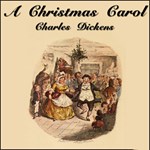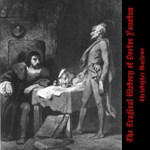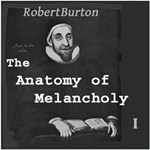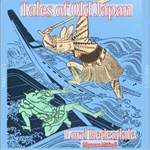
Learn English with the classics

|

English Audiobooks
Learn English listening and reading Audiobooks, or if you know the language, just enjoy our catalog.

English Grammar
Use these English grammar lessons for self study or to consolidate your lessons with your teacher.

Mobile Apps
Download the best mobile apps for learning English, available for Android, iPhone, iPad and MAC.
Recommended Books

Dracula (dramatic reading)





Stoker, Bram Bram Stoker did not invent the vampire story, but he popularized it with his classic 1897 novel. In form Dracula is an epistolary novel, told through a series of journal entries, letters, newspaper articles, and telegrams. It begins with lawyer Jonathan Harker's perilous journey to Castle Dracula in Transylvania, and chronicles the vampire's invasion of England, where he preys upon the lovely Lucy Westenra and Harker's fiancee, Mina. Harker and Mina join forces with lunatic asylum proprieter Dr. Seward, Lucy's fiance Arthur Holmwood, Texas man of action Quincey Morris, and Dutch vampire hunter Dr. Van Helsing to try and defeat their powerful adversary.

Wonderful Wizard of Oz, The




Baum, L. Frank The timeless story of the Wizard Of Oz. Follow Dorothy as she leaves Kansas for Oz on a cyclone. She meets many strange, and wonderful people and creatures along the way. Enjoy it again with your children and family.
L. Frank Baum's classic story that has made pop culture status.

Christmas Carol, A (version 6)




Dickens, Charles The tale begins on a Christmas Eve exactly seven years after the death of Ebenezer Scrooge's business partner. Scrooge has no place in his life for kindness, compassion, charity or benevolence. He hates Christmas, calling it "humbug", refuses his nephew Fred's dinner invitation, and rudely turns away two gentlemen who seek a donation from him to provide a Christmas dinner for the Poor...

Tragical History of Doctor Faustus, The


Marlowe, Christopher The Tragical History of Doctor Faustus, normally known simply as Doctor Faustus, is a play by Christopher Marlowe, based on the Faust story, in which a man sells his soul to the devil for power and knowledge. Doctor Faustus was first published in 1604, eleven years after Marlowe's death and at least twelve years after the first performance of the play.

Morte d'Arthur, Le - Vol. 1


Malory, Thomas, Sir Le Morte d'Arthur (spelled Le Morte Darthur in the first printing and also in some modern editions, Middle French for la mort d'Arthur, "the death of Arthur") is Sir Thomas Malory's compilation of some French and English Arthurian romances. The book contains some of Malory's own original material (the Gareth story) and retells the older stories in light of Malory's own views and interpretations. First published in 1485 by William Caxton, Le Morte d'Arthur is perhaps the best-known work of English-language Arthurian literature today. Many modern Arthurian writers have used Malory as their source, including T. H. White for his popular The Once and Future King.

Idiot, The (Part 01 and 02)


Dostoyevsky, Fyodor The extraordinary child-adult Prince Myshkin, confined for several years in a Swiss sanatorium suffering from severe epilepsy, returns to Russia to claim his inheritance and to find a place in healthy human society.
The teeming St Petersburg community he enters is far from receptive to an innocent like himself, despite some early successes and relentless pursuit by grotesque fortune-hunters. His naive gaucheries give rise to extreme reactions among his new acquaintance, ranging from anguished protectiveness to mockery and contempt.
But even before reaching the city, during the memorable train journey that opens the novel, he has encountered the demonic Rogozhin, the son of a wealthy merchant who is in thrall to the equally doomed Natasha Filippovna: beautiful, capricious and destructively neurotic, she joins with the two weirdly contrasted men in a spiralling dance of death...

Connecticut Yankee in King Arthur's Court, A


Twain, Mark Come and hear the strange tail of The Boss Hank Morgan, a modern day (at the time of publication) Connecticut Yankee who inexplicably finds himself transported to the court of the legendary King Arthur (as the title of the book implies). Hank, or simply, The Boss, as he comes to be most frequently known, quickly uses his modern day knowledge and education to pass himself off as a great magician, to get himself out of all sorts of surprising, (and frequently amusing) situations, as well as to advance the technological and cultural status of the nation in which he finds himself.
In the rather un-subtle sub-text of the story, Twain uses The Boss to express a surprisingly pragmatic and frequently contradictory philosophy. The Boss explores the relative merits of Democracy, and Monarchy, he expresses his views on the “Nature v. Nurture” debate, he frequently speaks forcefully against an established Church, but just as strongly advocates for religion and a variety of churches (just not a compulsory one) and he devotes at least one afternoon to introducing his companions to the concept of inflation. In a far more subtle, yet no less forceful manner, the Boss shares with the reader some views about taxation, slavery (both literal and wage slavery), trade unions, the origins of the German language, the nature of marriage, and probably most powerfully, death.
It is a tall order for a relatively brief text, but Twain manages it all with surprising clarity. No one will agree fully with the Boss on all of these matters, and I would be surprised if Twain himself would. In fact the Boss’s views are so pragmatic, and often contradictory, the reader is left to wonder if Twain himself is alternately speaking through the Boss, and setting him up as a straw man. Either way it is a delightful story and a great piece of American Literature, to say nothing of an excellent argument for education.

Princess of Mars, A (solo) Version 2

Burroughs, Edgar Rice John Carter is mysteriously conveyed to Mars, where he discovers two intelligent species continually embroiled in warfare. Although he is a prisoner of four-armed green men, his Civil War experience and Earth-trained musculature give him superior martial abilities, and he is treated with deference by this fierce race. Falling in love with a princess of red humanoids (two-armed but egg-bearing), he contrives a daring escape and later rescues the red men from the hostility of another nation of their own race. In this struggle he enlists the aid of his former captors, whom he gradually civilizes, teaching them first the practical advantages of kindness to their beasts of burden and then of casting aside centuries of communal living in favor of the nuclear family. At last he even starts them on the path to mastering the arts of friedship and diplomacy. When the failure of the atmosphere-generator threatens the planet's inhabitants with extinction, Carter's luck, memory, and sheer determination make possible the salvation of the planet, but Carter himself falls unconscious before he knows the success of his efforts. The novel ends with his sudden involuntary return to Earth.

Roughing It

Twain, Mark Roughing It is semi-autobiographical travel literature written by American humorist Mark Twain. It was authored during 1870–71 and published in 1872 as a sequel to his first book Innocents Abroad. This book tells of Twain's adventures prior to his pleasure cruise related in Innocents Abroad.

Anatomy of Melancholy Volume 1, The

Burton, Robert The Anatomy of Melancholy is a book by Robert Burton, first published in 1621. On its surface, the book is a medical textbook in which Burton applies his large and varied learning in the scholastic manner to the subject of melancholia (which includes what is now termed clinical depression).
Though presented as a medical text, The Anatomy of Melancholy is as much a sui generis work of literature as it is a scientific or philosophical text, and Burton addresses far more than his stated subject. In fact, the Anatomy uses melancholy as the lens through which all human emotion and thought may be scrutinized, and virtually the entire contents of a 17th-century library are marshalled into service of this goal.
Burton is forthright about his intentions in writing the Anatomy — "I write of melancholy by being busy to avoid melancholy," he concedes. This acknowledged desire to distract and amuse himself motivated Burton to produce a wide-ranging document, containing digressions and commentary. Whatever its strengths as a medical text or as a historical document, it is the Anatomy's vast breadth — addressing topics such as digestion, goblins, the geography of America, and others — and the particularly characteristic voice of its author that are most commonly cited by its admirers as the main sources of its appeal. Both satirical and serious in tone, the Anatomy is "vitalized by (Burton's) pervading humour", and Burton's digressive and inclusive style, often verging on a stream of consciousness, consistently informs and animates the text.

Second Variety

Dick, Philip K. Early victories by the USSR in a global nuclear war cause the United Nations government to retreat to the moon leaving behind troops and fierce autonomous robots called “Claws”, which reproduce and redesign themselves in unmanned subterranean factories. After six bloody years of conflict the Soviets call for an urgent conference and UN Major Joseph Hendricks sets out to meet them. Along the way he will discover what the Claws have been up to, and it isn’t good… - Second Variety was first published in the May 1953 edition of Space Science Fiction Magazine.

Two Poe Tales

Poe, Edgar Allan Edgar Allan Poe is best known for his famous short horror stories; however, horror is not the only genre in which he wrote. How To Write a Blackwood Article and its companion piece A Predicament are satirical works exploring the pieces of the formula generally seen in short horror stories ("articles") found in the Scottish periodical "Blackwood's Magazine" and the successful misapplication of said formula by - horrors! - a woman author! - respectively.
Originally paired together as The Psyche Zenobia and The Scythe of Time, Poe first published these pieces in the American Museum based in Baltimore, Maryland in November 1838. The names of the works as we currently know them were attached when they were published in Poe's collection Tales of the Grotesque and Arabesque and in the fourth volume of his Collected Works.

Tales of Old Japan

Redesdale, Lord Tales of Old Japan by Lord Redesdale is a collection of short stories focusing on Japanese life of the Edo period (1803 - 1868). It contains a number of classic Japanese stories, fairy tales, and other folklore; as well as Japanese sermons and non-fiction pieces on special ceremonies in Japanese life, such as marriage and harakiri, as observed by Lord Redesdale. The best know story of these is "The Forty-seven Ronins" a true account of samurai revenge as it happened at the beginning of 18th century Japan.
Algernon Bertram Freeman-Mitford, 1st Baron Redesdale (1837 - 1916) was a British diplomat, collector and writer. He worked in Japan as second secretary to the British Legation at the time of the Meiji Restoration. He wrote Tales of Old Japan in 1871.

Great Artists: Volume 1

Keysor, Jennie Ellis Biographies of Raphael Santi, Murillo, Peter Paul Rubens, and Albrecht Durer. This is a wonderful tool for art study as there are references for further study, as well as ideas for language arts to incorporate into the study
SPONSORED LINKS


